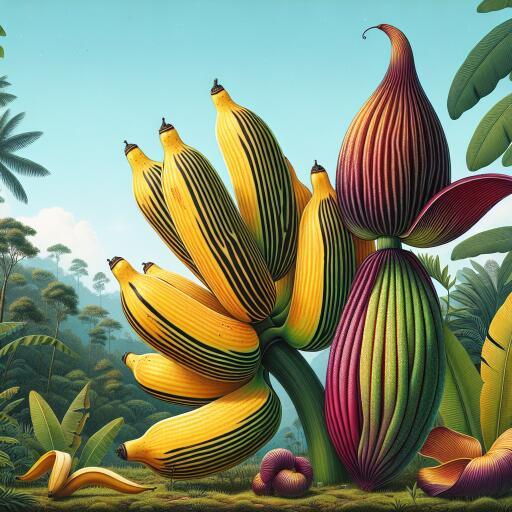
Discovering New Splendors of Nature: Two Unique Banana Species Unveiled in Arunachal Pradesh
In a significant breakthrough in the field of botanical research, a collaborative team from the North Eastern Regional Institute of Science & Technology (NERIST) and Manipur University has uncovered two previously unknown wild ornamental banana species in Arunachal Pradesh, casting new light on the biodiversity richness of the region.
The newly identified species, aptly named Musa siangensis and Musa bracteata, were discovered in distinct locations that span the diverse ecological landscape of Arunachal Pradesh. Musa siangensis was found in the verdant surroundings of Ngopok village, nestled within the East Siang district, while Musa bracteata emerged from the lush greenery of Ompuli village in the Papum Pare district. These discoveries mark a noteworthy expansion in the catalog of wild bananas known in this biodiversity hotspot.
Embarking on an odyssey of exploration that spanned over eight years, the research team, including PhD scholars and seasoned professors, delved deep into Arunachal Pradesh’s varied terrains. Their objective was to map the distribution and diversity of wild banana species, which are an integral part of the state’s ecological and cultural heritage. This intense scientific pursuit highlighted Arunachal as a global center for banana diversity, now boasting over 21 identified wild species.
The initiative for this ambitious research project stemmed from efforts led by Dr. Singh, supported by DBT-funded projects, highlighting the vital importance of field research in uncovering the mysteries of plant life. The findings, which underline the significance of these discoveries, were proudly published in a recent issue of the Nordic Journal of Botany, contributing valuable knowledge to the scientific community and beyond.
However, the journey does not end with discovery. The emergence of these new banana species has shone a spotlight on the broader environmental challenges facing such biodiverse regions. The encroachment of human activity, including road construction and forest clearance, poses a significant risk to the survival of these and other species. The research team observed firsthand the elimination of extensive banana habitats, a troubling sign of the times that calls for urgent conservation measures.
Recognizing the myriad uses of bananas – from their crucial role in livelihoods to their significant ecological functions supporting various animal and soil organisms – the researchers issued a passionate call to action. They appealed to the public to champion the cause of forest conservation, emphasizing the intertwined fates of human well-being and ecological integrity.
In response to this challenge, NERIST has taken a proactive stance by initiating a banana conservation program. This innovative effort aims to preserve the rich banana diversity of Arunachal Pradesh through the collection and cultivation of live plants, safeguarding these treasures for future generations.
The discovery of Musa siangensis and Musa bracteata not only enriches our understanding of the world’s plant diversity but also highlights the urgent need for conservation in the face of relentless environmental degradation. It is a clarion call for collective action to protect our planet’s natural wonders, ensuring their survival for the ecological and economic benefit of all.





Leave a Reply